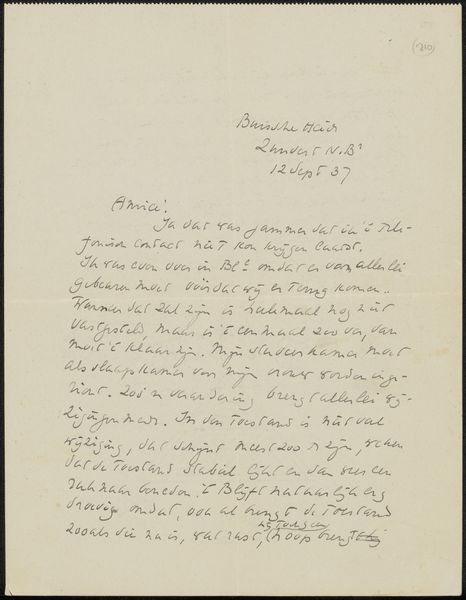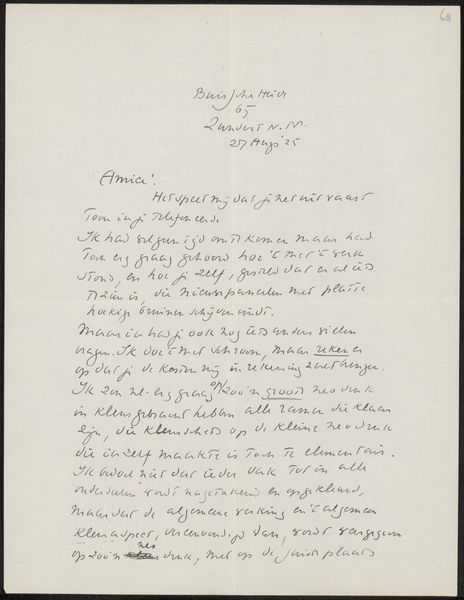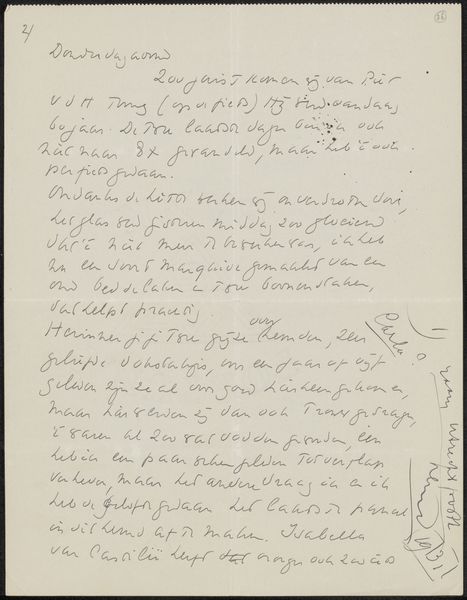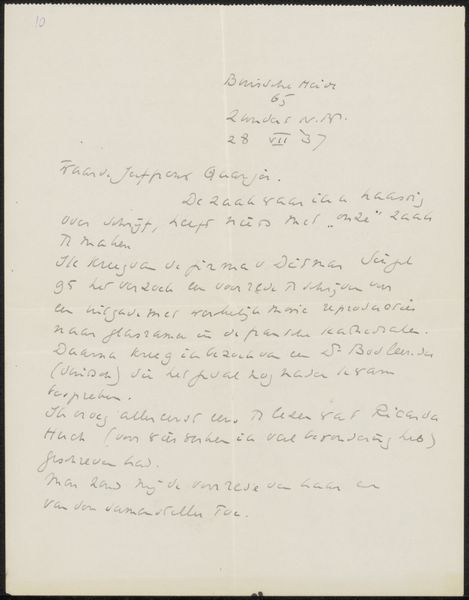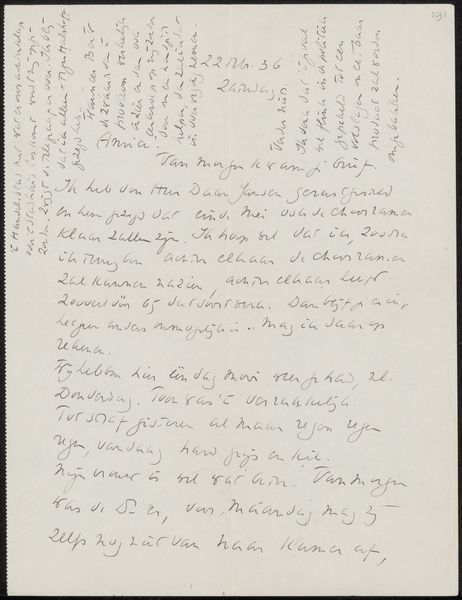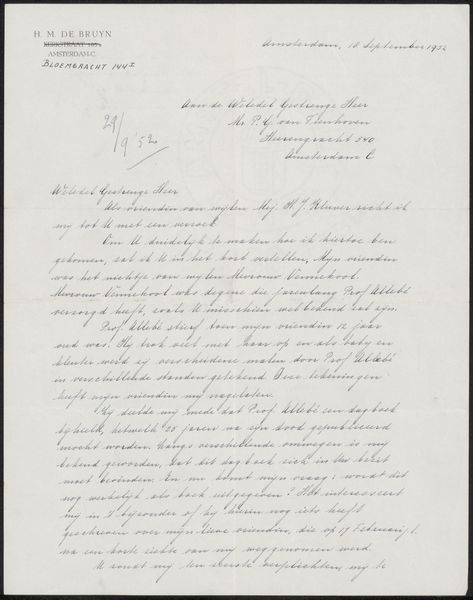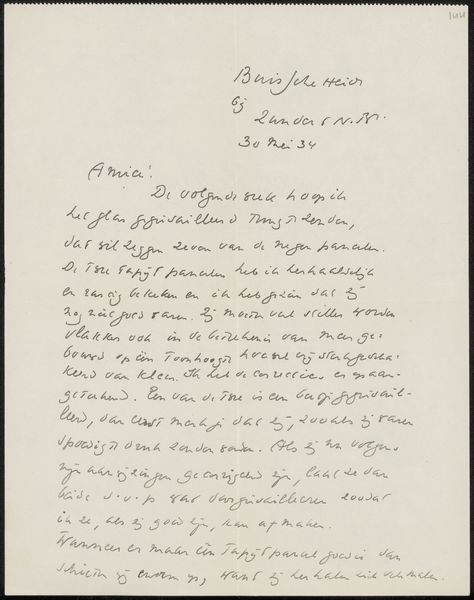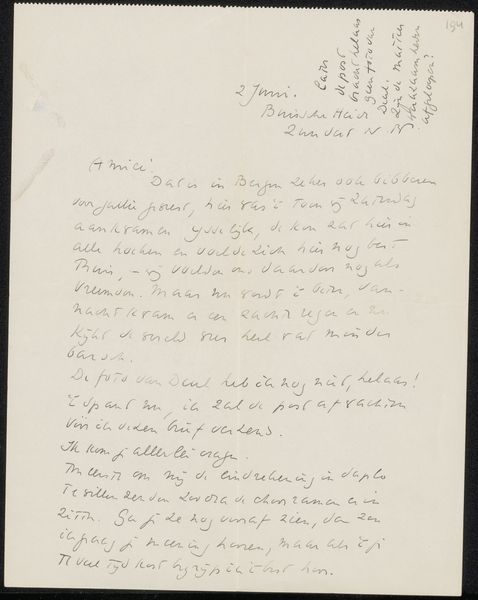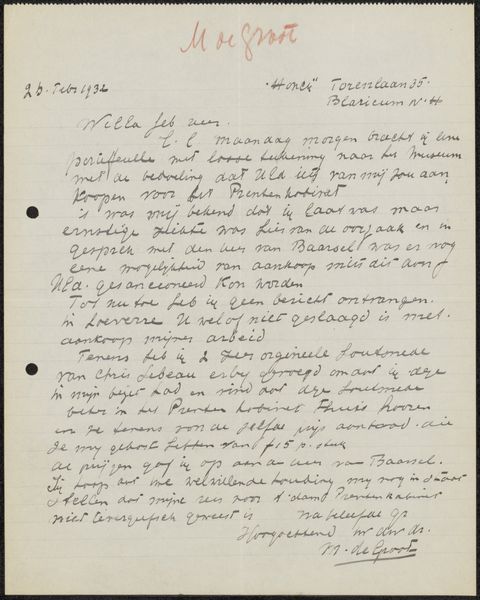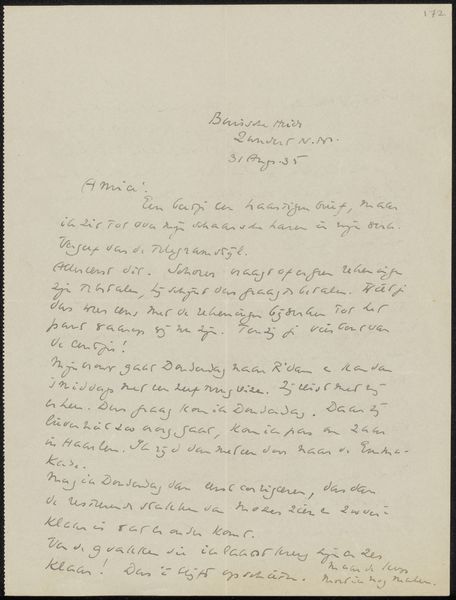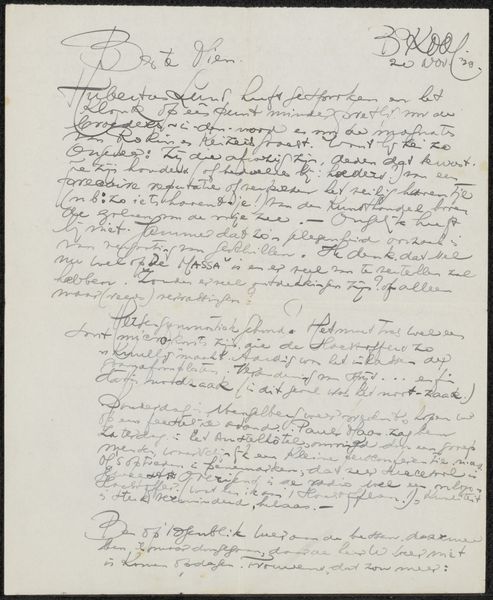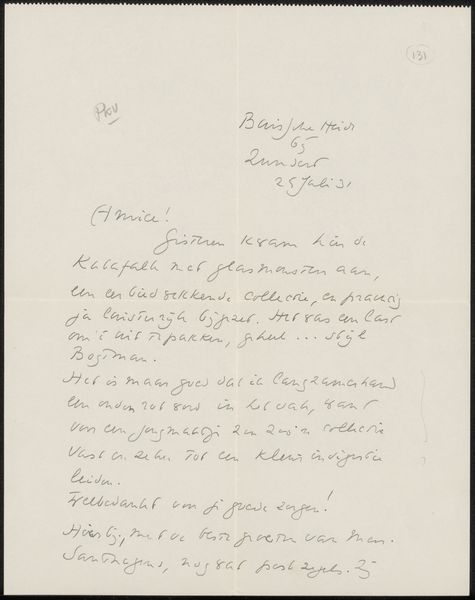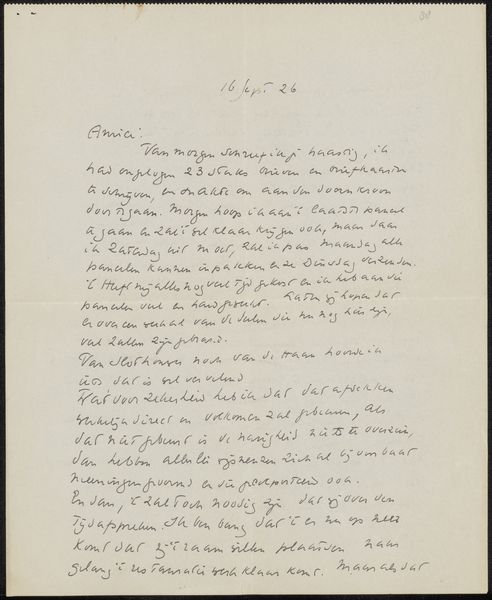
drawing, paper, ink, pen
#
drawing
#
paper
#
ink
#
pen
Copyright: Rijks Museum: Open Domain
Curator: Let’s turn our attention now to "Brief aan Willem Bogtman" by Richard Nicolaüs Roland Holst. This piece, likely created between 1931 and 1939, showcases the artist's handwriting in pen and ink on paper. It’s currently held at the Rijksmuseum. What are your initial thoughts? Editor: It’s intimate, isn't it? Raw in a way. I immediately focus on the handwritten quality of the work: it is about mark making, production, and labor when a note gets rendered with immediacy by the writer's own hand, the artist's tools, and paper and ink materials to bring it into existence. Curator: Indeed. The act of writing itself takes center stage. Look closely—notice the rhythm of the handwriting and how the penmanship lends its unique voice through these visual symbols and imagery? It speaks volumes about Roland Holst’s personality, as if we are somehow intercepting a private conversation with Willem. The way it fills the space makes me wonder about Roland Holst's message. Editor: Good eye. Because while on the surface it’s just correspondence, letters have long been tools for intellectual exchange and social engagement. To me, a letter embodies labor: the labor of physically forming the letters, sure, but also the work of thinking through ideas, communicating them with precision, and enacting social rituals by communicating at a remove, instead of immediately. Curator: I agree. Letters, particularly handwritten ones, function almost like artifacts, imbuing emotion with a feeling of presence—they carry a historical significance that speaks to me on many levels. This one feels weighty, somehow. Editor: And isn’t that weight also due to the very portability of letters? They are documents of their era, encapsulating the limitations of technologies while pointing to new material horizons enabled by trade, colonialism, postal systems, and personal networks. Curator: Absolutely. It’s more than a message. The artifact’s surface acts as both a carrier of ideas and historical evidence. It speaks across time. Editor: This quick look made me think of all that's at play even in a seemingly simple act: correspondence, a dance between intimacy and the historical landscape. Curator: Yes, a dance indeed, offering us all a glimpse into both personal exchange and broader societal factors.
Comments
No comments
Be the first to comment and join the conversation on the ultimate creative platform.
